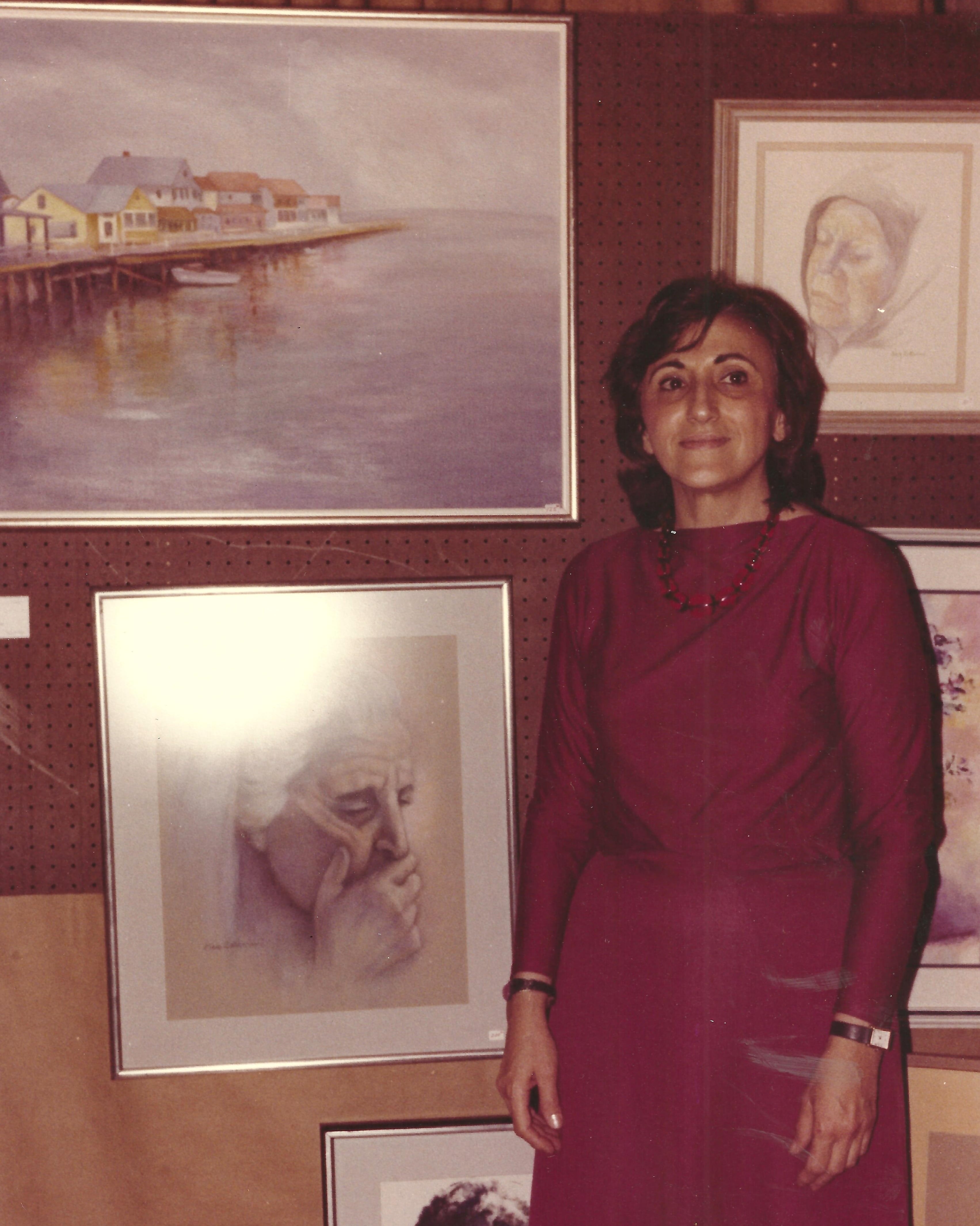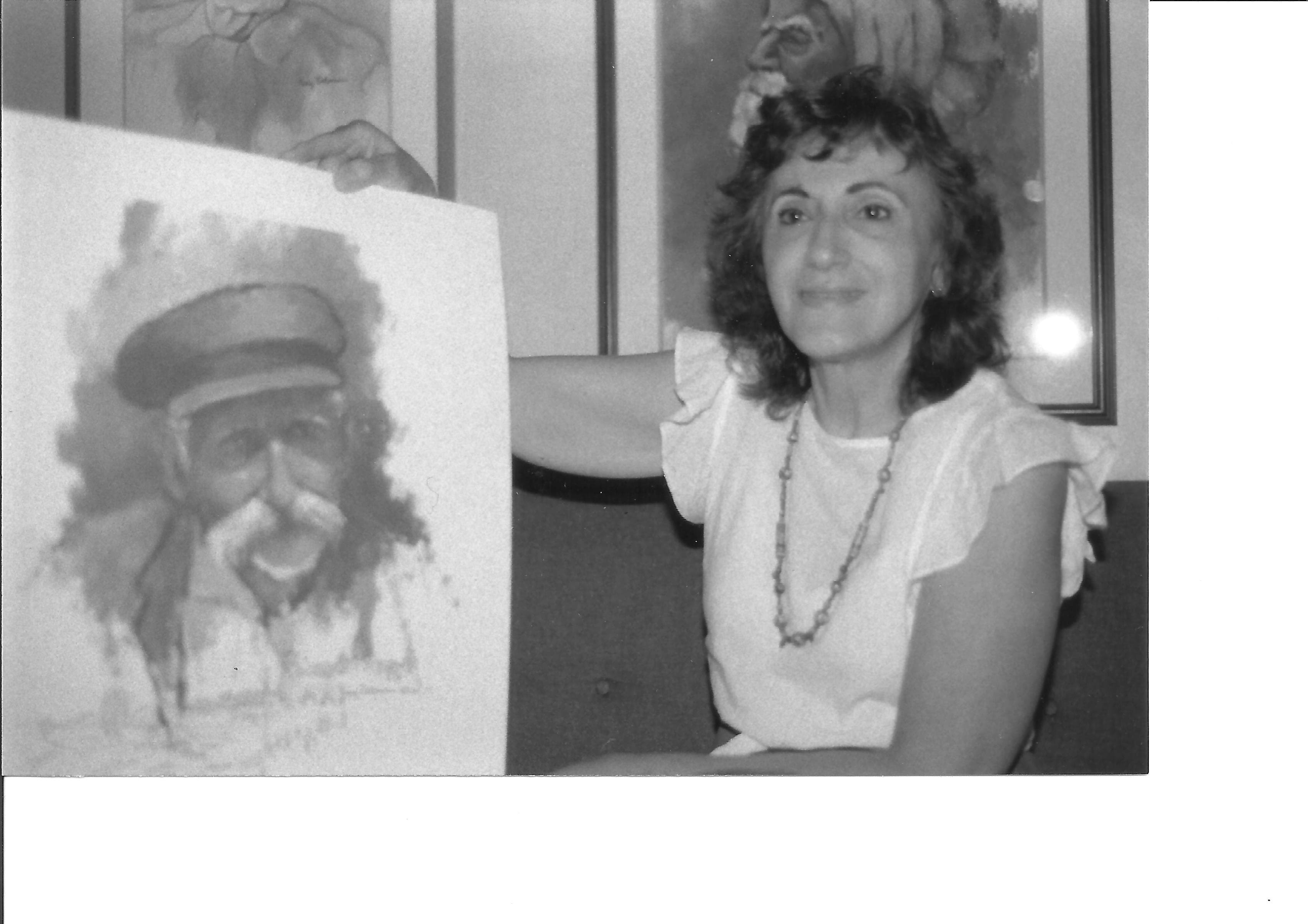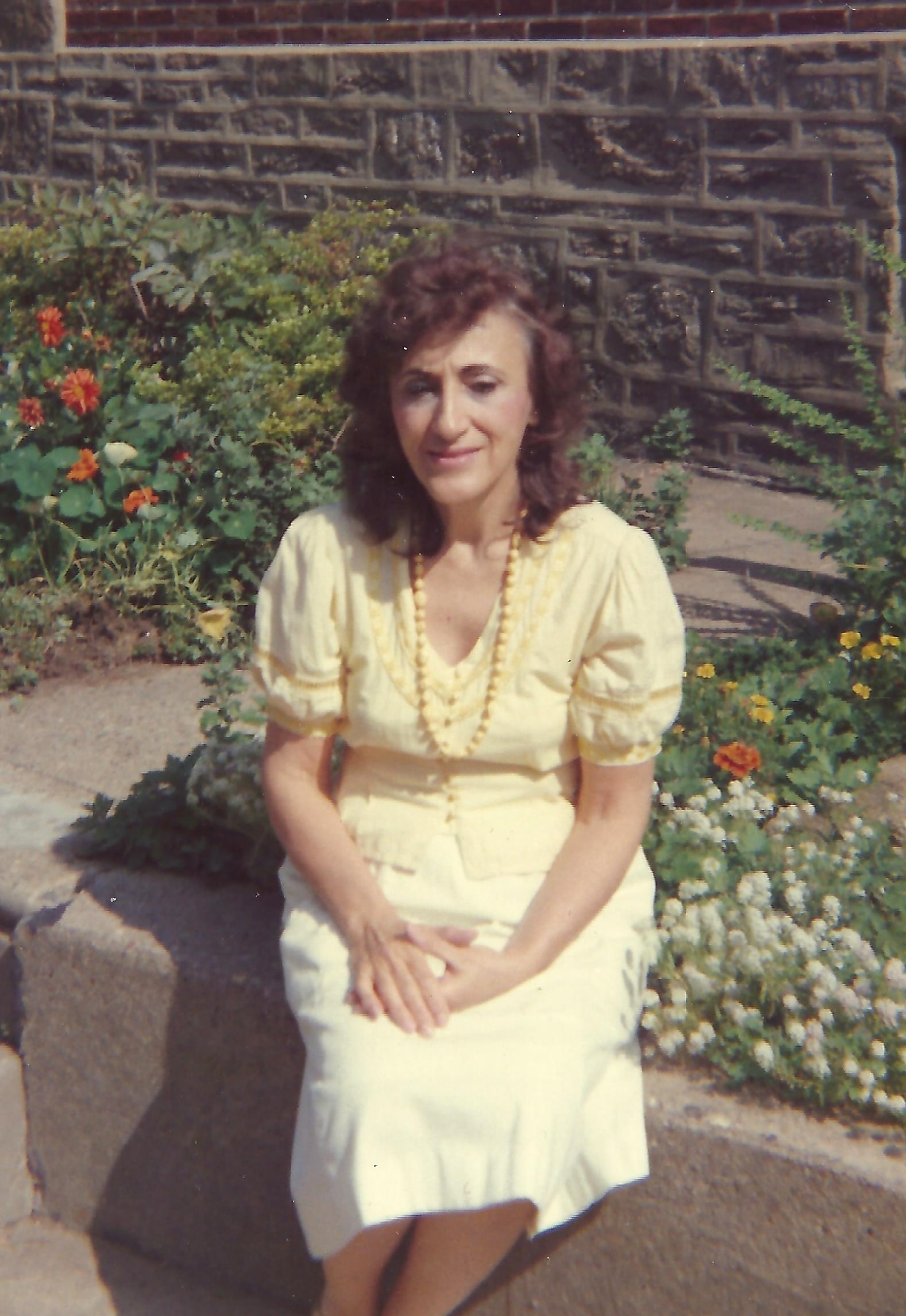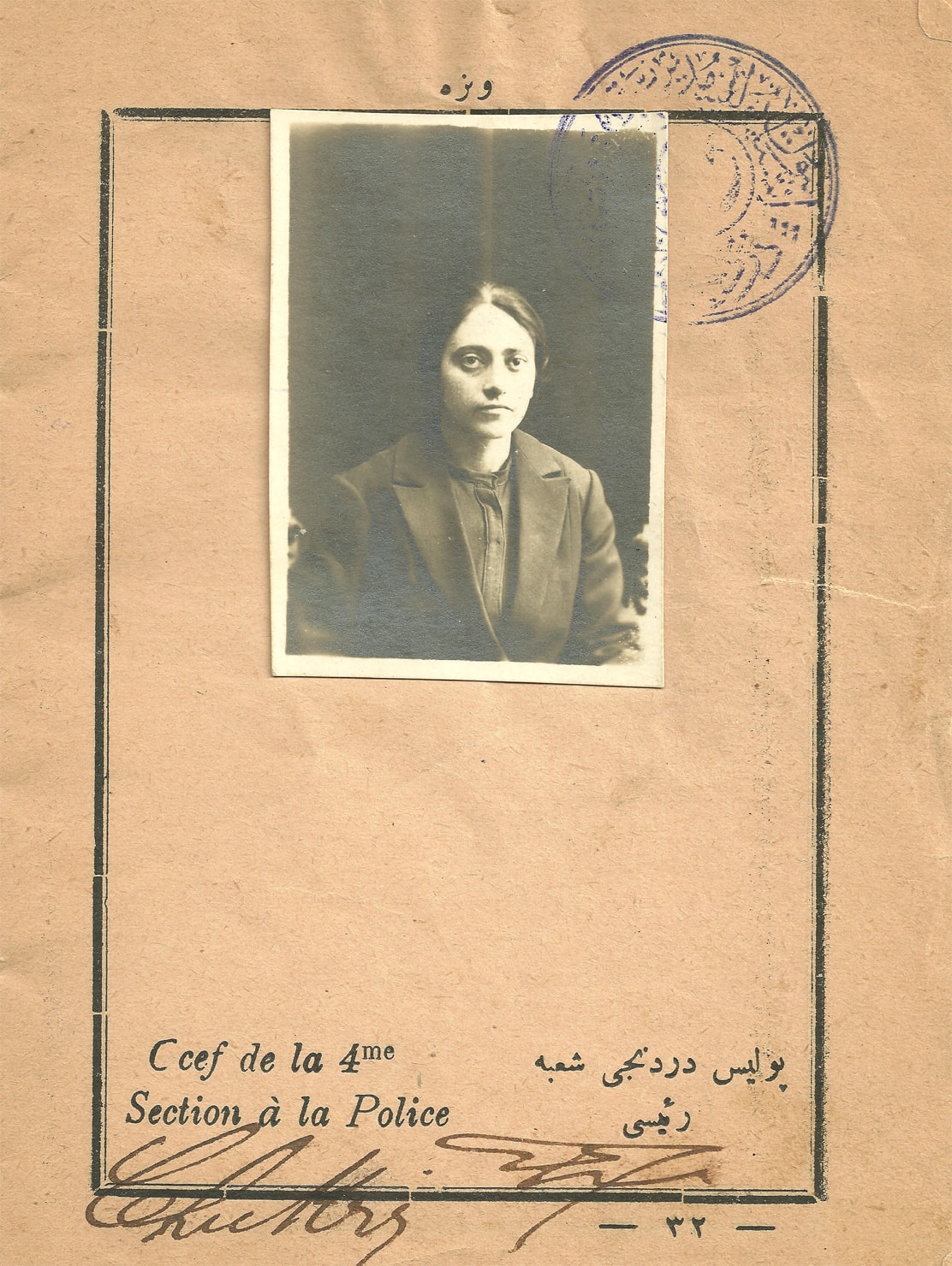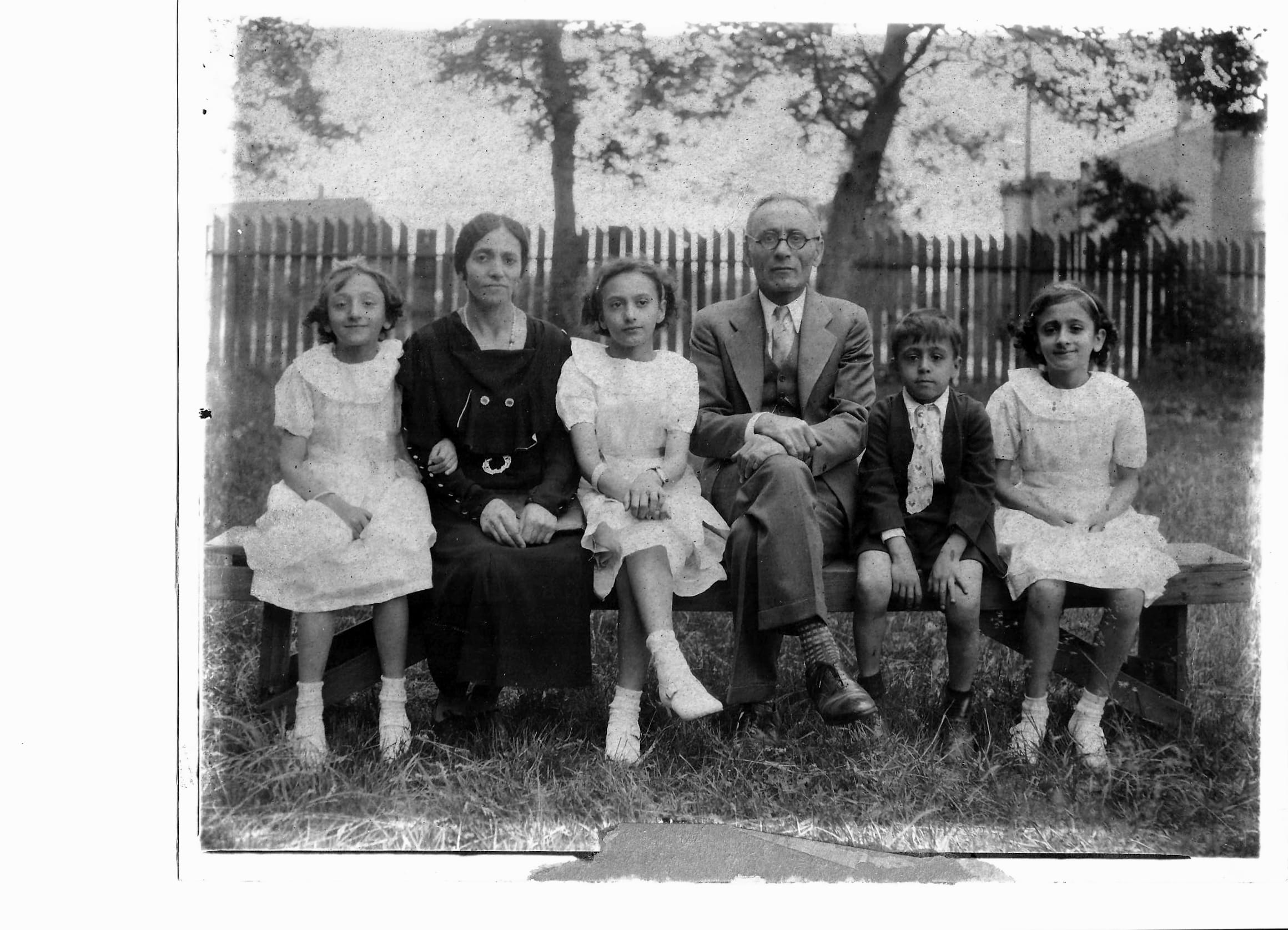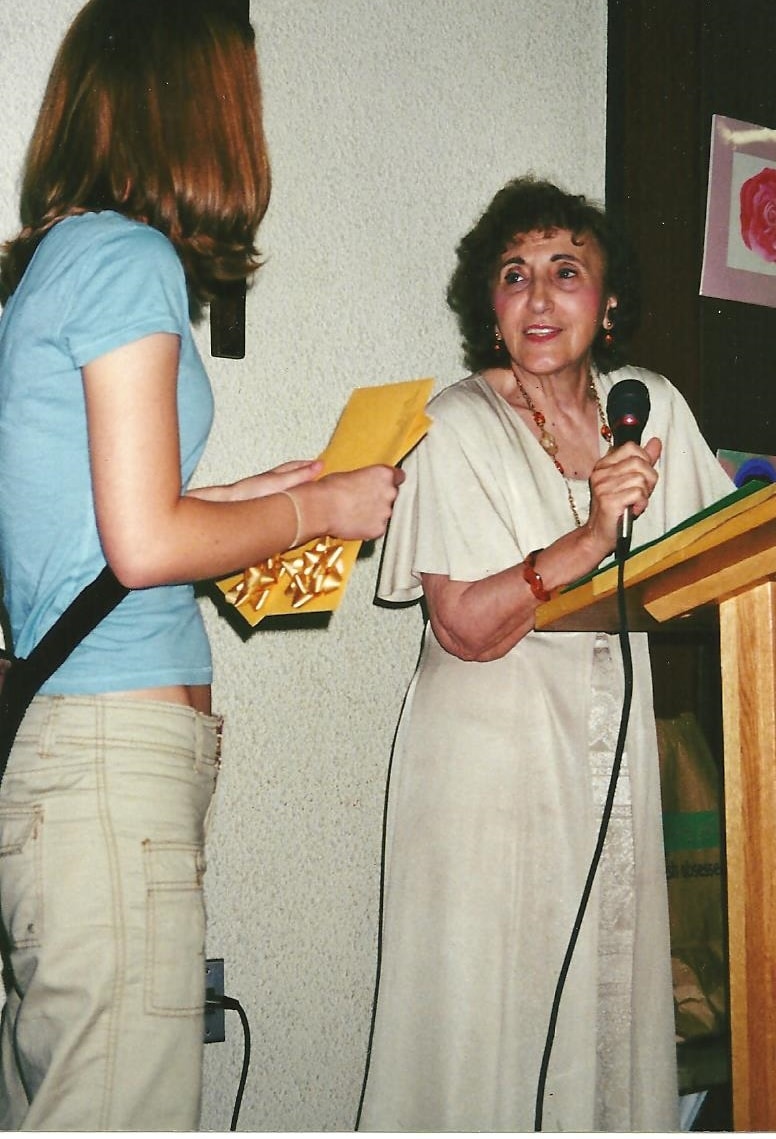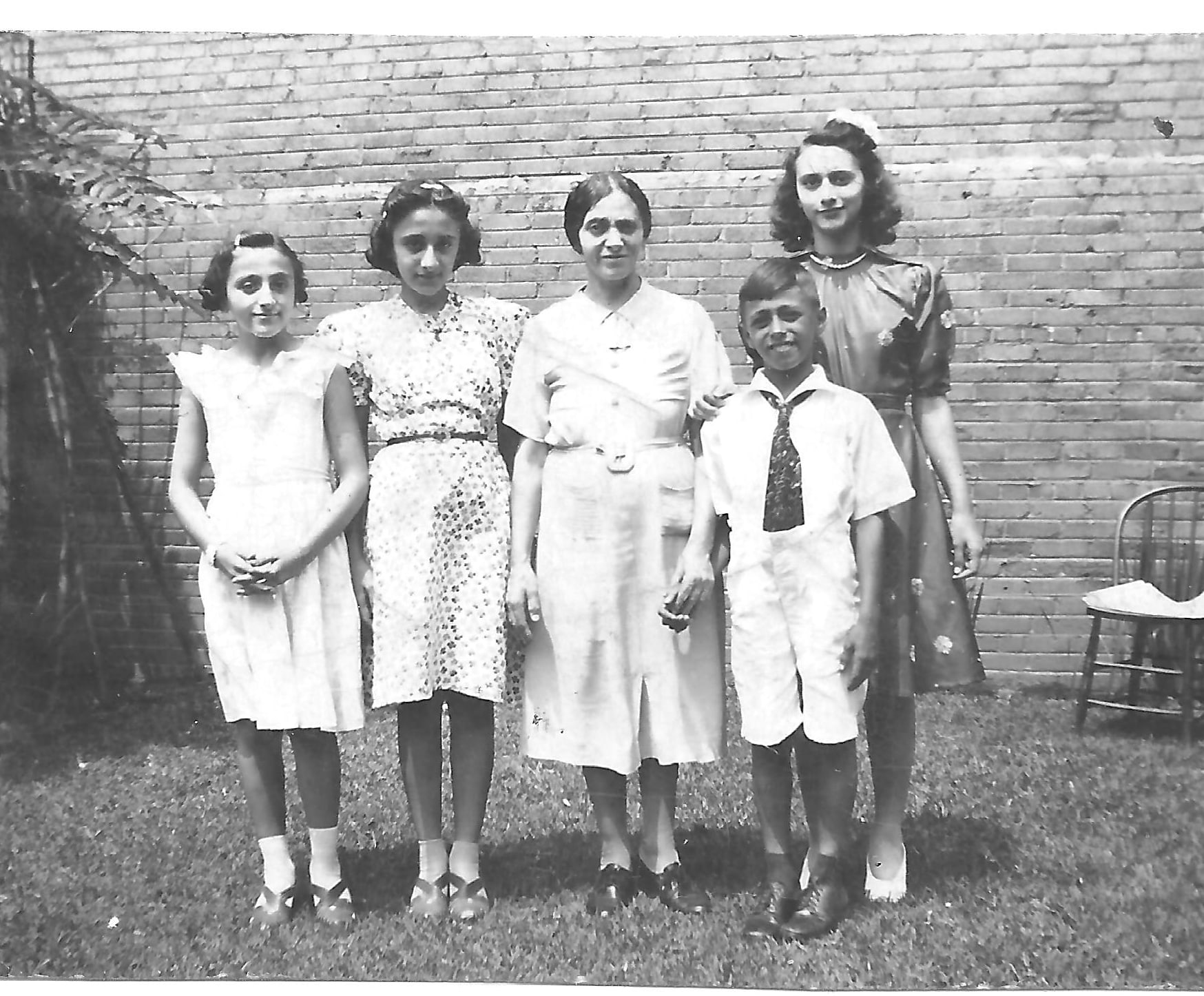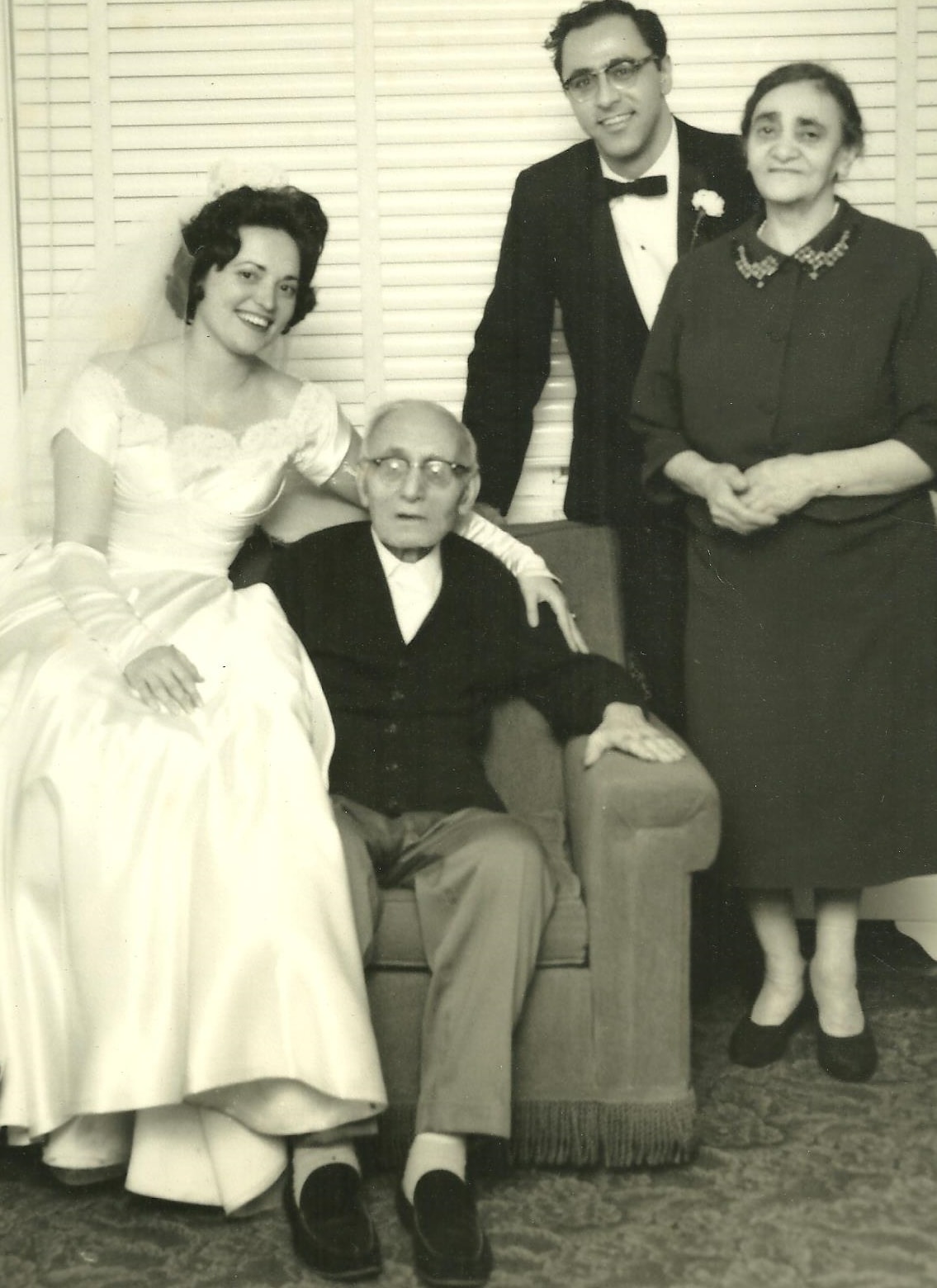The Zakarians of Philadelphia
The Zakarian Family of Philadelphia represents the quintessential American story:
surviving hardship in a foreign land, finding refuge through immigration to the United States,
and assimilating into American society. The family lived out the dual nature of the immigrant experience:
rootedness in the past, its culture, its language, and also its traumas, and anticipation of a better life and
limitless opportunities in a new land. The four children, Rose Arpajian, Sosie Kachikian, Mary Zakarian,
and Paul Zakarian, all lived successful American lives that were founded on their Armenian heritage.
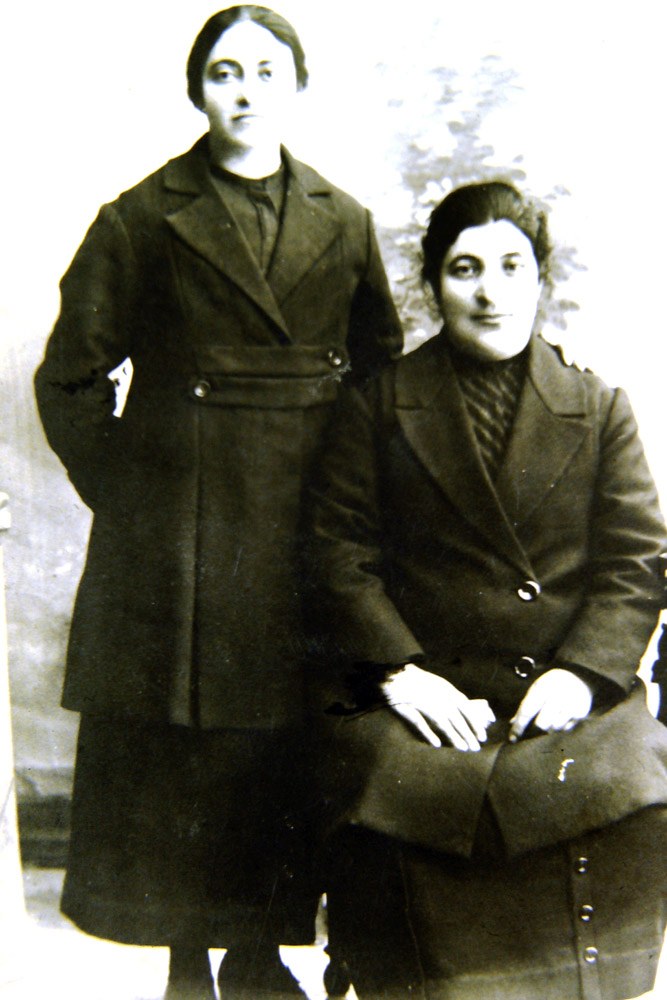 Mary Zakarian's mother, Arek (left), along with a companion, in 1923. Both women were from the village of Khnus,
now named Hinis, in Eastern Turkey and somehow survived the 1915 mass killings and deportations of the Armenian population
of that region. Arek eventually came to America, remarried, to Moses Zakarian, and raised a new family of four children.
However, the losses she endured in 1915, including the massacre of her husband and their two young sons, ages two and four,
stayed with her for the rest of her life. Unable to speak about the multiple traumas she suffered in 1915 and the ensuing eight years,
her face often told a tale of unresolved grief.
Mary Zakarian's mother, Arek (left), along with a companion, in 1923. Both women were from the village of Khnus,
now named Hinis, in Eastern Turkey and somehow survived the 1915 mass killings and deportations of the Armenian population
of that region. Arek eventually came to America, remarried, to Moses Zakarian, and raised a new family of four children.
However, the losses she endured in 1915, including the massacre of her husband and their two young sons, ages two and four,
stayed with her for the rest of her life. Unable to speak about the multiple traumas she suffered in 1915 and the ensuing eight years,
her face often told a tale of unresolved grief.
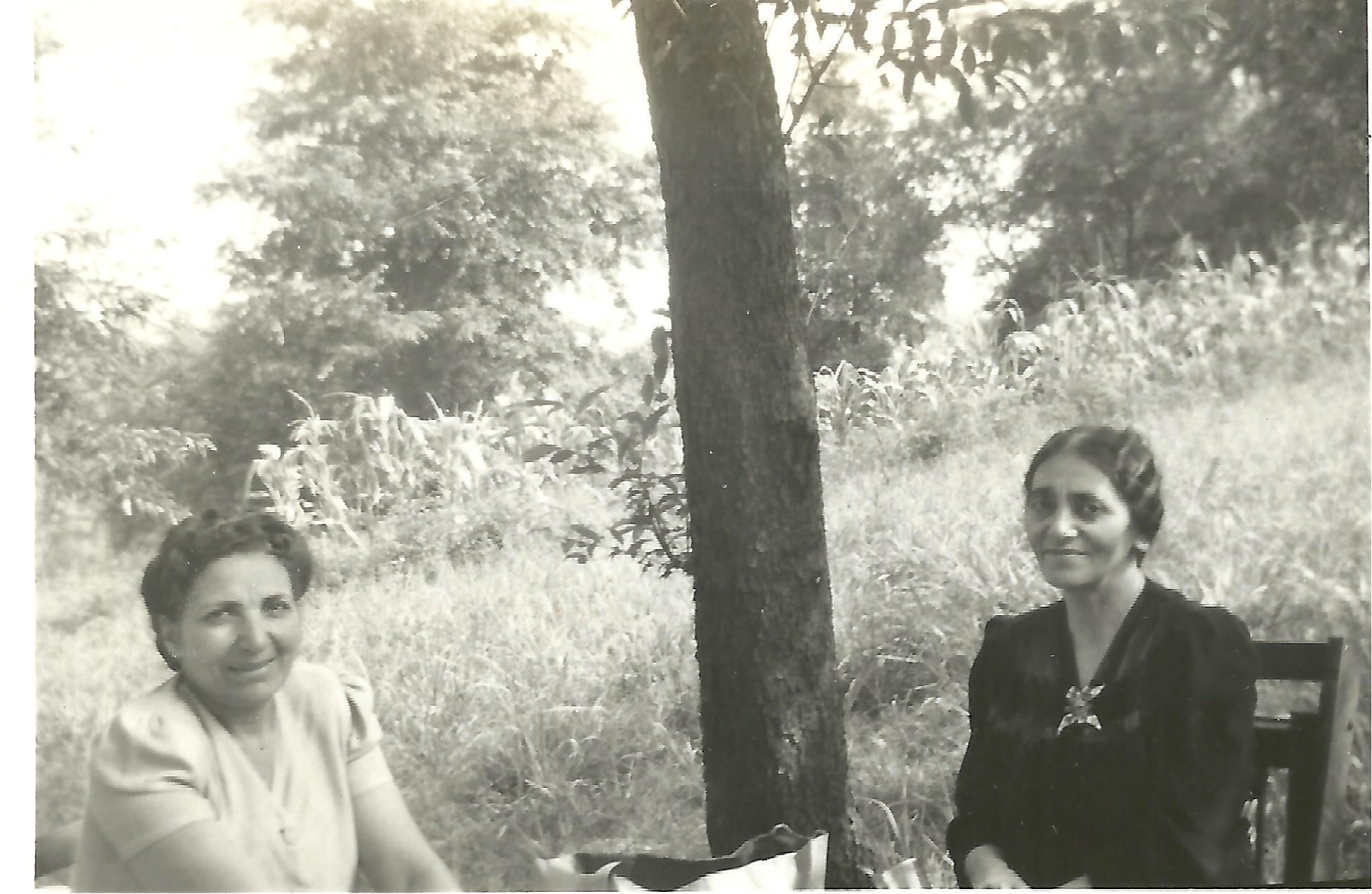 Arek Zakarian (right) with her cousin's wife, Sirvart Lulejian Melikian, circa 1940. Sirvart and her husband, Yeghishe, took Arek in when she first came to the United States as a refugee in 1923.
Arek Zakarian (right) with her cousin's wife, Sirvart Lulejian Melikian, circa 1940. Sirvart and her husband, Yeghishe, took Arek in when she first came to the United States as a refugee in 1923.
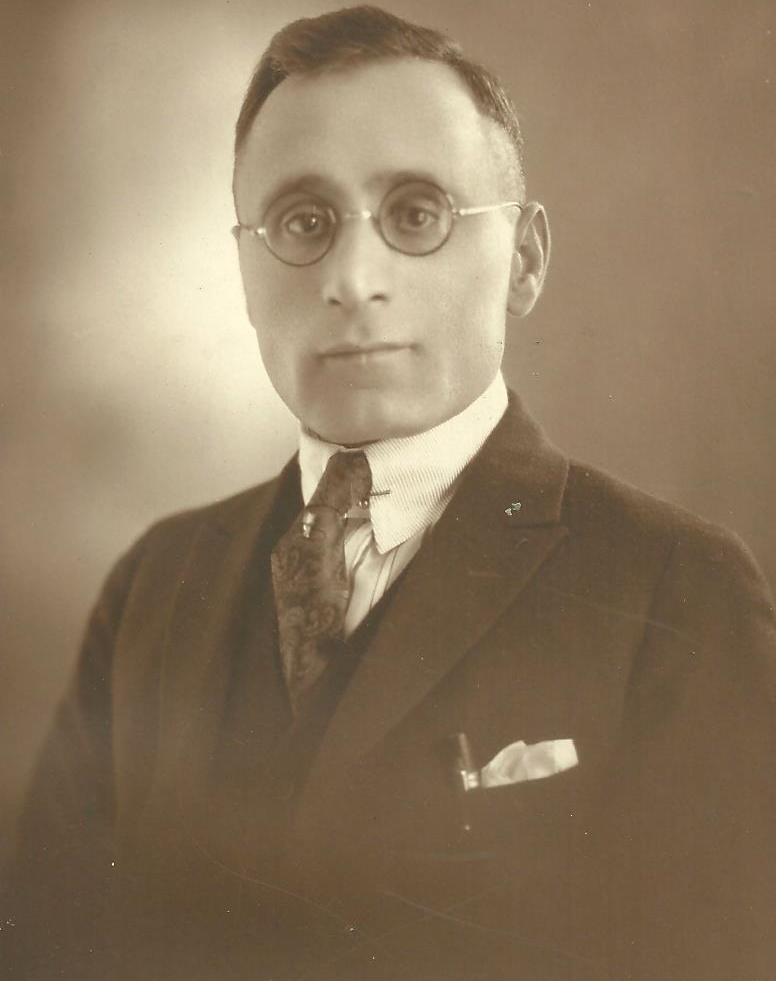 Mary's father, Moses Zakarian, also an Armenian born in the village of Khnus in Eastern Turkey, left his wife and four sons and sailed to America in 1913 with the intention of buying a loom to take back to his village, or, alternately, to make enough money to bring his family to join him. His return to Turkey became impossible because of the catastrophic events of 1915, and he learned soon after that his wife and sons did not survive the massacre. In Vermont, in 1924, he married fellow villager Arek Kocharian, who had survived and managed to find her way to the U.S. a year earlier.
Mary's father, Moses Zakarian, also an Armenian born in the village of Khnus in Eastern Turkey, left his wife and four sons and sailed to America in 1913 with the intention of buying a loom to take back to his village, or, alternately, to make enough money to bring his family to join him. His return to Turkey became impossible because of the catastrophic events of 1915, and he learned soon after that his wife and sons did not survive the massacre. In Vermont, in 1924, he married fellow villager Arek Kocharian, who had survived and managed to find her way to the U.S. a year earlier.
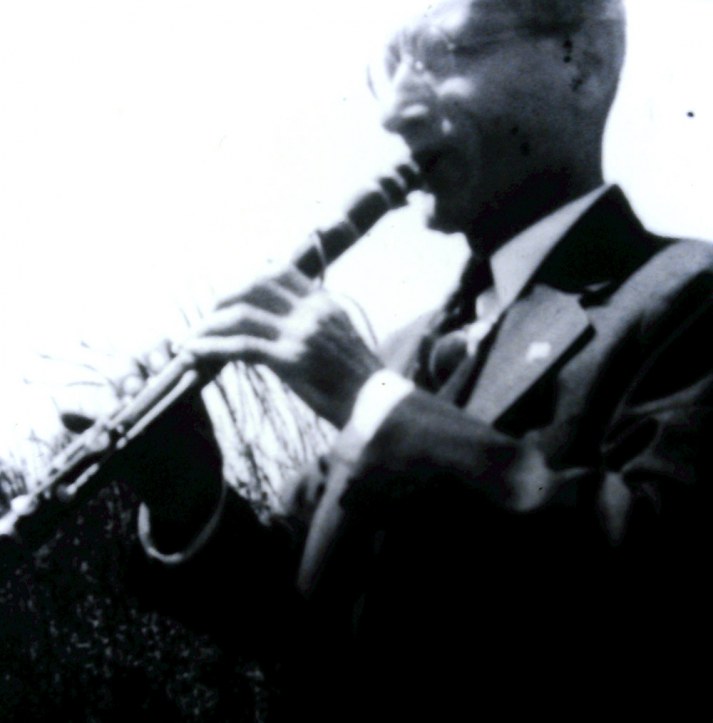 Moses Zakarian playing the clarinet. A weaver, and later a tailor, by trade, he was an accomplished musician who specialized in playing Armenian folk music on the zurna, the narr, and the duduk, a double reed instrument of ancient origins. When he came to America, Moses learned to play the clarinet, and used it, along with his folk instruments, to entertain at Armenian weddings and picnics.
Moses Zakarian playing the clarinet. A weaver, and later a tailor, by trade, he was an accomplished musician who specialized in playing Armenian folk music on the zurna, the narr, and the duduk, a double reed instrument of ancient origins. When he came to America, Moses learned to play the clarinet, and used it, along with his folk instruments, to entertain at Armenian weddings and picnics.
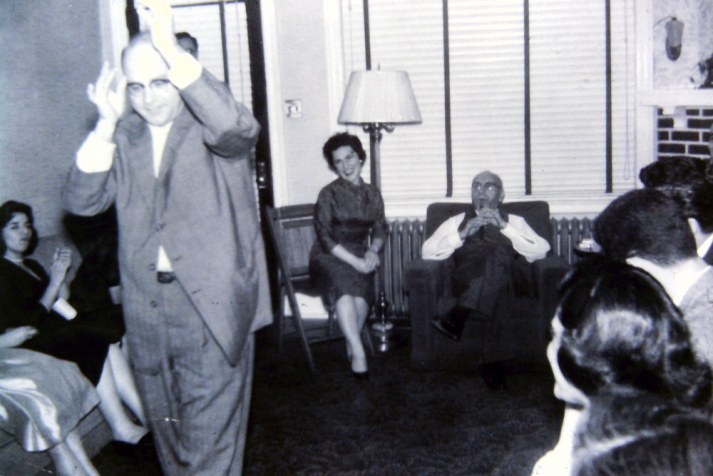 Moses playing for guests in the Zakarian family living room, at an informal gathering of friends that included traditional Armenian dancing.
Moses playing for guests in the Zakarian family living room, at an informal gathering of friends that included traditional Armenian dancing.
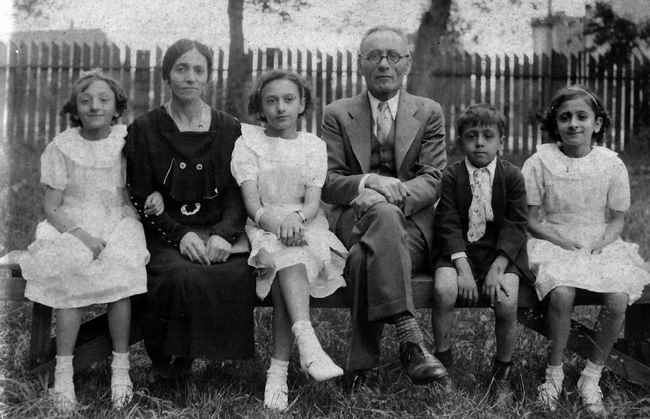 The Zakarian family in the mid-1930s at an Armenian picnic at Woodside Park in West Philadelphia. From left, Mary, Arek, Rose, Moses, Paul and Sosie.
The Zakarian family in the mid-1930s at an Armenian picnic at Woodside Park in West Philadelphia. From left, Mary, Arek, Rose, Moses, Paul and Sosie.
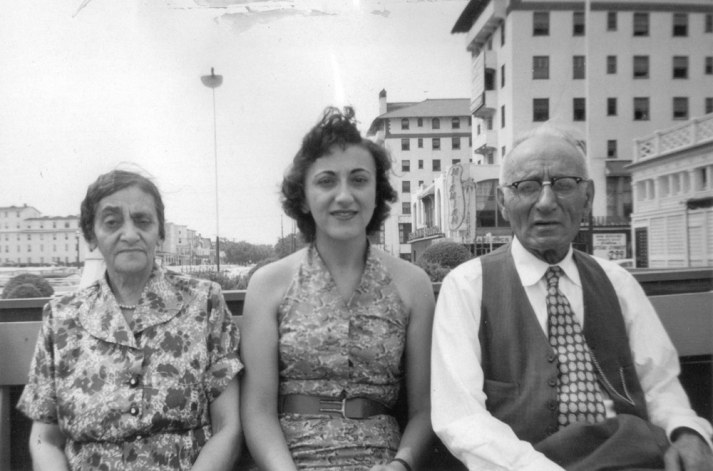 Mary with her parents, in the mid-1950s, at Asbury Park, NJ, where Armenians gathered every summer for decades.
Mary with her parents, in the mid-1950s, at Asbury Park, NJ, where Armenians gathered every summer for decades.
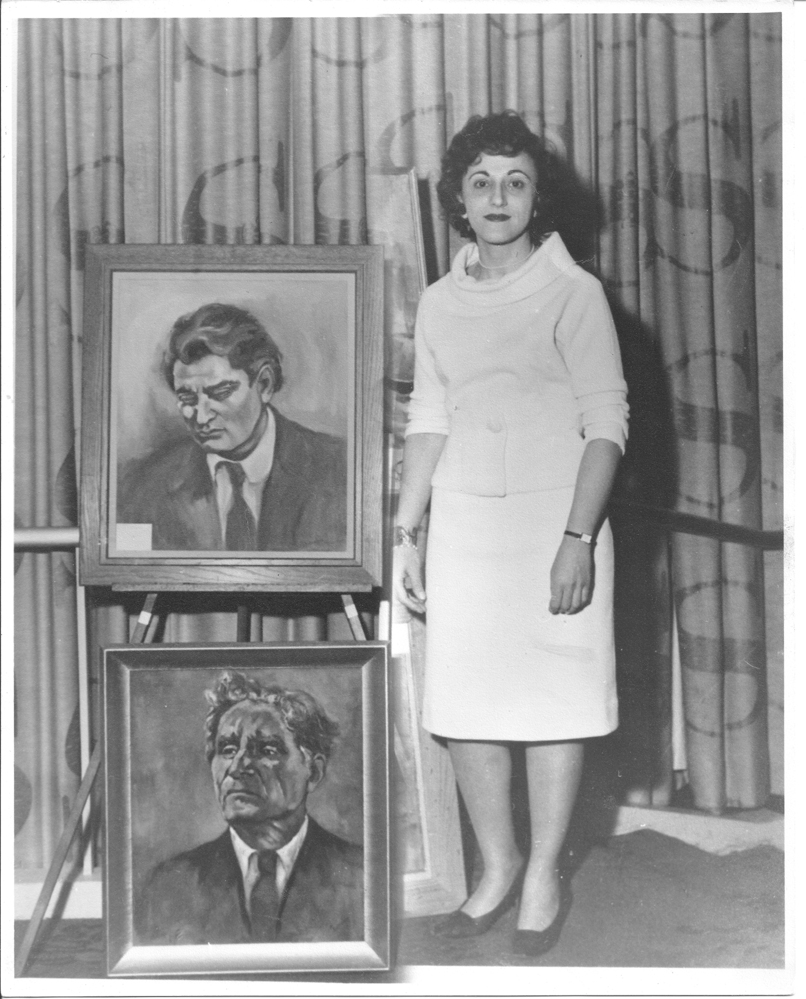 Mary at a successful showing of her portraits of Armenian writers and artists in the 1960s.
Mary at a successful showing of her portraits of Armenian writers and artists in the 1960s.

